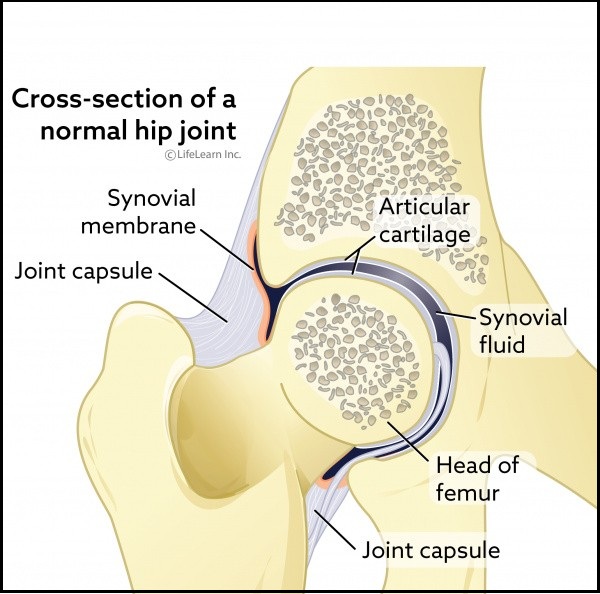Home | Medical Info | Understanding Osteoarthritis (Degenerative Joint Disease) in Cats
Understanding Osteoarthritis (Degenerative Joint Disease) in Cats
Keywords:
Understanding Osteoarthritis in Cats
Osteoarthritis (OA) is a common yet underdiagnosed condition in cats, affecting 90% of felines over age 10. Unlike dogs, cats rarely limp but instead show subtle signs such as reduced activity, reluctance to jump, stiffness, and irritability. OA leads to chronic pain, joint inflammation, and mobility loss, significantly impacting a cat’s quality of life. Early detection and proactive management are crucial in slowing the disease progression. Treatment includes pain relief (Solensia™, NSAIDs, steroids), joint supplements (Omega-3s, glucosamine), weight management, physical therapy, and home modifications to support mobility. At Canton Animal Hospital, we provide comprehensive arthritis care to help your cat stay active and pain-free.
What is a Joint?
A joint is where two or more bones meet, allowing movement. Most movable joints are supported by a joint capsule, which contains:
Synovial membrane – Produces joint fluid to lubricate movement.
Articular cartilage – Covers bone ends, reducing friction.
Ligaments and tendons – Provide joint stability and support.
Without proper lubrication and cushioning, joint degeneration occurs, leading to osteoarthritis.
Featured Resources

We Welcome New Patients!
We're always happy to give your furry friend care at our hospital. Get in touch today!
Contact Us
What is Osteoarthritis (Degenerative Joint Disease – DJD)?
Osteoarthritis (OA) is a chronic, progressive condition where the protective cartilage inside joints deteriorates, leading to:
Pain & stiffness due to inflammation and cartilage damage.
Bone remodeling as the body attempts to stabilize the affected joint.
Loss of mobility that worsens over time.
"feline degenerative joint disease signs and treatment"
Unlike dogs, cats with OA often do not limp but display subtle changes in behavior. Studies show that 90% of cats over 10 years old have some form of arthritis, making it one of the most underdiagnosed conditions in feline medicine.
Signs of Osteoarthritis in Cats
OA in cats is underdiagnosed because symptoms are often subtle. Common behavioral and physical changes include:
Reluctance to jump onto furniture or climb stairs.
Increased sleeping or reduced activity.
Difficulty using the litter box, especially with high sides.
Irritability or aggression when touched.
Stiffness after resting or difficulty moving.
Reduced grooming, leading to a matted coat.
Many cat owners mistakenly believe these signs are just "normal aging," but they often indicate chronic pain and joint disease.
"early signs of arthritis in cats"
How is Osteoarthritis Diagnosed?
A veterinary examination, combined with X-rays or advanced imaging, helps confirm OA by detecting:
Joint space narrowing.
Bone spurs (osteophytes).
Cartilage loss and inflammation.
Your veterinarian may also use mobility scoring systems and pain assessment tools to evaluate the extent of arthritis.
"cat arthritis diagnosis and imaging"
Treatment Options for Osteoarthritis in Cats
Although OA is not curable, several treatment strategies help slow progression and improve quality of life.
Pain Management & Anti-Inflammatory Therapy
Solensia™ (frunevetmab) – A new monoclonal antibody therapy specifically for cats that provides long-term pain relief.
NSAIDs (Non-Steroidal Anti-Inflammatory Drugs) – Must be used cautiously in cats under veterinary supervision.
Steroid injections for severe cases that do not respond to other treatments.
"Successfully managing your cat’s OA means maximizing comfort and function while minimizing pain."
Joint Supplements & Nutraceuticals
Omega-3 fatty acids – Reduce joint inflammation.
Glucosamine & chondroitin – Support cartilage health and joint lubrication.
Adequan® (polysulfated glycosaminoglycan) – Helps prevent cartilage breakdown and supports joint function.
"alternative pain relief for arthritic cats"
Weight Management & Mobility Support
Obesity worsens OA – A low-calorie, joint-friendly diet helps maintain ideal weight.
Raised food and water bowls reduce joint strain.
Soft, orthopedic bedding improves comfort.
Environmental Modifications for Arthritic Cats
"An often-overlooked yet very important environmental modification is slip-free flooring."
Provide ramps or steps to access favorite perches.
Use non-slip rugs to prevent slipping.
Lower litter box entry for easier access.
"best arthritis treatments for cats"
Physical Therapy & Alternative Treatments
For cats with chronic OA, multimodal management is essential. Additional therapies include:
Acupuncture & chiropractic care – Help alleviate pain and improve mobility.
Laser therapy – Reduces inflammation and enhances tissue healing.
Rehabilitation exercises – Maintain muscle strength and joint flexibility.
Talk to our veterinary team about a customized arthritis management plan!
Featured Resources

We Welcome New Patients!
We're always happy to give your furry friend care at our hospital. Get in touch today!
Contact UsFrequently Asked Questions (FAQs)
Caring for a cat with osteoarthritis can raise many questions. Below, we provide expert answers to common concerns about symptoms, treatments, pain relief options, and home care modifications to help improve your cat’s comfort and mobility.
